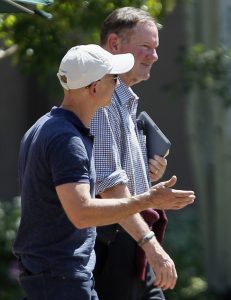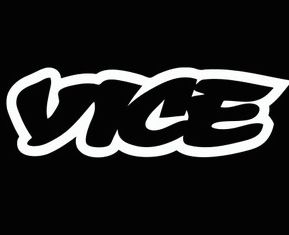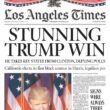Jeff Bezos is the founder of Amazon who defined online shopping and re-wrote the rules of commerce. In 1994, he left a well-paid job in a Wall Street hedge fund and thought he would try something bold while the internet was young. He settled in Seattle, in the small US north-west state of Washington, after reading of a ruling that online retailers were not liable for sales tax in states where they lacked a physical presence. Consequently, Amazon sales to almost 98% of the US population would initially be tax-free.
The Princeton engineering graduate has always

taken a long-term, wide-angle view of business. He has frequently upset investors by sacrificing short-term profits in order to place big long-term bets on new technologies. It’s a philosophy Bezos first outlined in a 1997 letter to shareholders, entitled simply “It’s all about the long term”. He was reporting on a phenomenal year, in which sales had increased by no less than 800%. But Amazon took a further four years to make its first quarterly profit which, even then, was a mere $5m on revenues of $1bn. Although the share price has since increased 300-fold (and has more than doubled in 2015), actual profits have come and gone with infuriating regularity.
The Amazon boss can certainly be infuriating. His “pathologically happy and infectiously enthusiastic attitude” has won support from many employees. But he has been described as “at once a happy-go-lucky mogul and a notorious micro-manager: an executive who wants to know about everything from contract minutiae to how he is quoted in all Amazon press releases.”
He has also been called “a double-personality”, who can quickly switch from being compassionate into an abrasive, intimidating boss. Even stories about his distinctive laugh (“a cross between a mating elephant seal and a power tool”) are coupled with descriptions of a man with “ice water in his veins”. Some former managers refer to Amazon’s “bloodthirsty, combative culture”. This past summer, the New York Times published a scathing expose: “Inside Amazon: Wrestling Big Ideas in a Bruising Workplace” about reportedly harsh business and employment practices. So, the golden image has some blemishes which are lent irony by relentless.com, one of the company’s former names which still redirects to the retailer’s main domain.
‘Bold not timid’
Amazon is now the world’s most valuable retailer with revenues of almost $90bn, a market capitalisation of $300bn and almost 100,000 employees. It is the largest employer in Seattle, the birthplace of Starbucks, Costco, Nordstrom – and Jimi Hendrix. Last year it shipped more than 5bn items to 225m customers worldwide. It is committed to making what Bezos calls “bold rather than timid investments” which include full-blooded expansion into movies and video-streaming. The company has a suitably ambitious mission: “We seek to be Earth’s most customer-centric company for four primary customer sets: consumers, sellers, enterprises, and content creators.”
The success is illuminated by the cloud-computing infrastructure which Bezos built a decade ago to support his huge retailing and which has quietly become an internet giant called Amazon Web Services (AWS). It’s a global system which enables any entrepreneur with a credit card to rent servers by the minute and buy unlimited amounts of online storage capacity whenever they want. It now has revenues of some $8bn and could – by itself – be worth more than $100bn. One investor said recently: “AWS is absolutely exploding … If you’re starting a business today, you don’t need a tech department, you don’t need a back office, you can use AWS. By the way, it’s just ripping to shreds the 10 or 15 consultants from IBM … that you used to need, but you don’t need because now you go into cloud.”
AWS usage grew by an eye-watering 90% in the last quarter of 2014, from customers which now include not only hundreds of thousands of small companies but also many of the world’s largest corporates. It may now be generating up to 70% of Amazon profits, is being chased by the world’s computer industry, and is the most spectacular symbol of the company’s endless inventiveness. Perhaps significantly for the company’s media future, one of the largest ASW clients is none other than Netflix, whose North American subscription-video service is said to account for almost 40% of internet bandwidth during peak periods.
It is 21 years since the New Mexico-born Bezos left New York to launch his virtual bookstore. He raised $1m from Seattle investors, and set about creating an online retailer bristling with innovation: “one click” ordering; “if you liked that, you may like this”; and reviews from readers and the media. His mission was simple and direct: “Make online shopping so easy and convenient that customers won’t think twice.” It’s a long time since Amazon was mainly about selling books but it is still setting the standard by which all other e-commerce is judged.
Jeff Bezos owns some 18% of the company and is now said to be the world’s fourth wealthiest person, worth almost $60bn. It’s all a long way from the 2001 prediction by an analyst from Lehman Brothers (yes) that Amazon would go bust within 12 months. Like most tech entrepreneurs, Bezos is not focused on just one thing. He has created Blue Origin, a space-flight start-up to help “anybody to go into space”. And he’s an investor in Uber, Business Insider, an Uber-like trucking company Convoy, small business lender Fundbox, and at least 20 digital startups.
Meanwhile, the man whose fusion of e-commerce and content has arguably re-defined not just retailing but also media, has turned his mind to solving the seemingly terminal problems of daily newspapers. Bezos made 2013 headlines when he (not Amazon) bought the

chronically loss-making Washington Post from the Graham family for $250m. It was a thunderbolt for US media which reacted as if, well, Donald Trump had bought the Smithsonian or the British Museum.
As Vanity Fair said: “The Washington Post is haunted by its history. Dominated by towering figures such as Katharine (Kay) Graham, executive editor Ben Bradlee, and the reporters who pursued the Watergate scandal, Bob Woodward and Carl Bernstein, the mythology of the Post was always grander than the reality. No other newspaper enjoyed quite the hype the Post did during its heyday.”
Some of journalism’s finest hours had been presided over by Kay Graham, whose father had bought the newspaper out of bankruptcy for $825k in 1933 when it was fifth in a rack of Washington newspapers. By the 1980s, when it was on its own and making profits of hundreds of millions of dollars, one journalist remarked that only two papers were better-known globally than the Washington Post: Russia’s Pravda and Superman’s fictitious Daily Planet.
Now, almost exactly 80 years later, it was being sold by Ms Graham’s son Don who had just announced a loss of almost $50m for the first six months of 2013. It was a familiar story of a once-mighty newspaper group whose 480,000 average weekday circulation was 40%

below its peak of 20 years before – with plummeting advertising revenues.
In between times, once-gilded newspaper moguls Tony O’Reilly, Conrad Black, Warwick Fairfax and Robert Maxwell had coveted the Post. But they had all long since shuffled from the stage.
Don Graham self-consciously explained his family’s decision to sell, in an interview with former Post star Ezra Klein, who had left to launch his “explainer blog” Vox: “I sat down to look at how 2012 had gone and what we could forecast about the next three years. 2013, we knew, was probably going to be the seventh year in a row of declining revenues and, particularly, declining print advertising revenues. Looking at the trends, our response to declining revenues has always been to try and innovate…We’ve had a lot of successful innovation at The Washington Post. But the innovations, though very high quality, weren’t offsetting the decline in revenue.”
Rather than auction his venerable newspaper to the highest bidder, Graham had commissioned media investment boutique Allen & Company to approach a small number of prospective buyers including Michael Bloomberg and Politico owner Robert Allbritton. He “chose” Bezos “because the billionaire could offer deep pockets, a digital brain, and – between the two – a way forward.” Graham and Bezos quickly agreed a deal, ironically, at Allen’s legendary Media & Technology Conference, in Sun Valley, Idaho, the very event where – 12 years before – the 84-year-old Kay Graham had fallen and subsequently died.
Media commentators could not agree whether it was a “trophy” purchase in the way that the ultra-rich buy sports teams or whether this was new media conquering the old. They did not know whether to feel excited or scared by the sight of a digital emperor in the newsroom which, 40 years before, had toppled President Nixon.
The journalistic heirs of Bernstein and Woodward were surprised and unnerved to find a distinctly humble and under-stated Jeff Bezos in their midst, explaining how he came to be there: “I didn’t seek to buy the Washington Post. I’ve

known Don Graham for many years. Earlier this year, Don, through an intermediary, approached me and said, “Would you be interested in buying the Washington Post. I was very surprised. My first question was, ‘Why would I even be a logical buyer? I don’t know anything about the news business. I don’t understand why I would be good at this.’ Don thought that, because the newspaper business is being so disrupted by the internet, someone who had a lot of internet knowledge and technology knowledge could actually be helpful.”
America’s savviest journalists quickly Googled some of Bezos’s own bleak predictions about newspapers, made in an interview the previous year: “There is one thing I’m certain about: there won’t be printed newspapers in 20 years. Maybe as luxury items in some hotels that want to offer them as an extravagant service. Printed papers won’t be normal in 20 years.” He hadn’t expected to buy a newspaper.
The glory days of the Washington Post are long gone. There are many free online sources for politics in the US capital, including the eight-year-old, well-funded Politico which was launched by two of its former journalists. And many people everywhere now start their news journey on Facebook, Twitter, SnapChat or LinkedIn – instead of legacy news sites.
But two years after Bezos swooped, there is some good news from the Post whose digital news has become one of the fastest-growing – up 40% to more than 59m multi-platform uniques in September. Mobile readership was up by almost 70%. It’s now getting close to the New York Times’ 66m US-based monthly uniques. In June, it was the 20th most engaging publisher on Facebook with two of

the most liked, shared and commented stories. <And since we posted this story, the Washington Post has announced that it reached in 66.9m visitors in October, narrowly edging out the New York Times (65.8m uniques). It’s a 59% increase in less than a year.>
It’s a highly promising start for the unexpected proprietor whose first action had been to expand the overall funding, resulting in more than 100 new people including journalists. But, in an industry where relatively fast-growing digital advertising still can’t keep up with falling print revenues, there is no silver bullet.
For every executive who says that unbundling the traditional newspaper for digital consumers is the answer, there are others pointing out that digital is not a single channel but a widening range of platforms and audiences with lots of competition. That is why traditional news brands everywhere are watching closely as Jeff Bezos splashes his digital millions on the reinvention not just of his own venerable newspaper but – perhaps – of the whole industry.
He started simply enough by saying: “I didn’t know anything about the newspaper business, but I did know something about the Internet.” On one level, the detail-obsessed digital entrepreneur seems like a dream newspaper proprietor: he doesn’t interfere with the work of journalists, even when they are, for example, siding with the New York Times’ attacks on Amazon. And he enthusiastically funds investment, experimentation and swelling losses. As newspapers everywhere keep cutting staff, Washington Post continues to do the opposite. Given how long Amazon took to break through to profitability, we should not expect, anytime soon, to celebrate the enduring reinvention of a traditional news brand. But, even now, it is becoming clear that Bezos has at least 4 lessons for newspaper-centric companies.
1. Think big
His first inspired move was to appoint CEO Fred Ryan who had co-founded Politico and was former chief of staff to President Reagan. Ryan brought real credibility to what he described as Bezos’s long-term mission: “…to experiment, to think long-term, to give the experiments a chance and hopefully prove successful. To think not just about the news consumers today, but the future readers and be able to adjust to change.”
That was the context for hiring more journalists and for working on the content, not just the technology

and marketing. The early changes drew plaudits from close rival the New York Times whose media correspondent said: “The Post has been guilty of boring its readers in the past, but the current version is a surprising, bumptious news organisation — maybe not the pirate ship that Ben Bradlee helmed as executive editor, but it is a sharp digital and daily read. It’s creating challenges for, ahem, its competitors, and bringing significant accountability… enabling journalists to break news, chase scoops and light up the web…”
One Washington Post executive made the contrast between the bold strategies of Jeff Bezos and those of almost every other newspaper publisher:”Reporters need to know that they will be supported, that their colleagues aren’t going to disappear and that they can do their job without being worried all the time about losing it. Optimism, like negativity, can be infectious.”
Bezos declared that the Post would follow papers like The Guardian and the New York Times across the world – eventually. “Even though it had a national and global reputation, the product was local and that was by design. For a time, it was a good strategy and, as a business, it was super successful for decades, but that is what we’re changing. That’s a good starting point to be a national and even global publication.”
Staffers were excited (in a cynical journalist kind of way) with the expansion plan. It started to make its online content available free – on the site and via its tablet and smartphone apps – to subscribers of some 300 local dailies such as the Dallas Morning News, Toledo Blade, Honolulu Star-Advertiser, and Minneapolis Star-Tribune.
The move has boosted web traffic while also building the Washington Post’s brand in areas where it’s not available in print. It’s a smart move in which no money is changing hands. Although the local dailies are strengthening their subscription offer, the Post is collecting data on the subscribers which worries some newspaper bosses. It is certainly easy to believe that this Amazon relationship with regional papers could develop into the kind of content-sharing affiliate model which has long been a feature of radio and TV broadcasting in the US. It feels like the very start of an approach to networking newspapers across the US – and around the world.
The Post has already expanded its London-based marketing team to exploit its almost 2m monthly uniques in Europe and many believe it will soon follow the New York Times and BuzzFeed in building up a substantial news platform in the UK. Perhaps it will emulate the New York Times’ international edition which – as the International Herald Tribune – was jointly-owned by the Washington Post until 2003. It might even want to do this by acquiring a non-US newspaper like Britain’s ailing The Independent.
The ambitious, try-everything strategy is pure Amazon. The man who, for years, kept ploughing back virtually all the company’s growth wants his newspaper to build a broader national and international audience. And the web traffic shows it is starting to work.
Then, there is the almost inevitable collaboration. After two years as a free app on Kindle Fire tablets, the Washington Post is now being offered free for six months (and at a heavily discounted rate thereafter) to members of Amazon Prime.
This tie-up promotes the news brand to an estimated 50m US customers – and, potentially, a further 40m across the world. It is all in pursuit of Bezos’s aim of maximising the audience for the journalism by putting it in a yet-to-be-defined package that will draw the largest number of readers. He is obsessed with finding a way to integrate a news product into millions of people’s lives in a new way. Obviously, that will depend on technology.
2. Go tech
Notwithstanding Amazon’s uniquely retail-tech-media operations, traditional media companies are belatedly realising that they need to become much more like the tech companies with which they are competing – or else.
For decades, newspaper and magazine publishers have mouthed the words about the primacy of content. For most, it has been true enough, given the journalistic-skew of management and staffing. But, for so many newspapers, the economics and logistics of printing presses, paper reels and physical distribution have been dominant even when executives pretended otherwise. Then, when the web arrived, publishers everywhere were saying that they should not become technologists but should (somehow) just keep up with the inventors – because content would help them win. The irony was complete when traditional publishers started to declare themselves “digital first” which usually referred just to where the content first appeared rather than to any kind of revolution in the publishing process.
If anyone doubts that technology really should be driving content, they only have to reflect on how the smartphone is coming to dominate online activity. The format itself is driving the change in consumers’ appetite for content. It is also removing the last vestige of a visual connection with print media. The content winners in all things mobile are, increasingly, the companies able to develop completely new formats and media, not those tweaking existing products.
Nobody understands technology like Bezos. Amazon spends more than $6bn on R&D – apparently double that of Apple. And – even now – the part-time proprietor is all over the Washington Post tech. One of his less visible early moves was to invest in custom page template software to streamline a cumbersome design code which – like many newspapers – had slowed page-loading. The stunning result is that the Post’s page loading time has now been reduced by up to 85%, which is one reason for the September jump in its digital audience. Bezos said it would work and it did.
In addition to adding 20 engineers (bringing the total to 225), he opened a New York-based design and development office in order to create a more “reader-focused product.” It looks like a logical attempt to break away from the “local” newspaper roots and, perhaps, also a glimpse of a future with less Washington in the Washington Post. But things are changing in the newspaper office too.
At the new Washington headquarters, software engineers will sit alongside journalists, further integrating advertising sales, content and technology. The objective is to have an integrated digital news team, in which reporting, editorial, sales and tech development functions work closely together. As one executive puts it: “The new world is engineers and editors, or engineers and ad sales executives, sitting together and co-developing products. The ideas are as likely to come from the engineers as from the editors. What Jeff Bezos has brought is a lot of questions about how we go about our business. He’s brought ideas about what we might do, and then he’s brought capital, so he’s given us this capacity to experiment in a variety of ways.” And the experiments are coming thick and fast.
Now, as if to add substance to the speculation about the future of the relationships with ‘partner’ newspapers, the Washington Post is already licensing its super new text-photo-video-audio content management system to some of those US regional dailies. Apart from anything to do with the future of hundreds of newspapers linked by content, advertising and data, the whole project is starting to sound a bit like Amazon Web Services, which bounced from being a must-have, self-developed technology into a powerhouse business. So, there is the prospect of a big win here for the Washington Post and a new lower-cost, high-performance technology for the news business generally.
3. Spread the word
The Washington Post strategy is almost self-consciously the opposite of what traditional news media has got used to: adding staff, spending more on technology and marketing, and building partnerships. This is not how it’s been for newspapers whose decades of dominance have been followed by unending falls in revenue and salami sliced staffing cuts. Meanwhile, publishers lament the loss of young readers.
Unsurprisingly, Bezos is targeting millennials with a series of apps, even though such things have been pretty unpromising previously for news publishers. His “Rainbow” apps are driven by the conviction that news on the smartphone has suffered from being a constant stream of information. The new app has a glossy, magazine-like format, with only one story displayed at a time and a “pinch view” so readers can swipe through the edition as if flipping through magazine pages. There are also two separate “editions”, released at either end of the working day, similar to the traditional morning and evening newspapers. More

than that, the Washington Post team is experimenting with replicating the serendipity that has always played such a major part in newspaper reading (coming across things you weren’t looking for). So, they are testing giving readers two stories, the second being “adjacent” to the one readers have chosen.
It is determined to learn the news media lessons of the past as well as the future, and is trying almost everything to grow the audience. That’s why it’s at the front of the line for Facebook’s scheduled launch this week of Notify, the stand-alone mobile news app.
The quick-fire launch follows May’s introduction of Instant Articles which gave publishers a new way to embed stories directly into Facebook’s news feed. Stories appear faster than if users link to media websites. Publishers can sell ads inside the content themselves, keeping all of the revenue, or let the platform do so and share the income.
Washington Post is still one of the few major newspapers to make substantially all its current content available on Apple News. Where traditional publishers have worried about these alternative platforms, Bezos – like BuzzFeed’s Jonah Peretti – knows that the future of news is all about reaching consumers wherever they are and on whatever platform they choose.
This ability to think beyond traditional media ‘sovereignty’, where readers once could only access content directly from the one provider, continues to be the defining difference for new media. But most traditional news brands just can’t think beyond a world where they once owned the content, platform – and the unswerving loyalty of readers. Even the mighty digital service Mail Online can’t quite get there. And, last week, the UK’s largest tabloid The Sun dropped its paywall to join the popular news race. But the paper’s boss was still talking about making his site the “go to” destination. He’ll learn, of course.
4. Test, Test, Test
What torments traditional news brands most, of course, is the whole question of how to monetise digital media. Newspaper-centric groups have long been stuck in a futile debate about whether to have a paywall or not. They are getting a bit more subtle now with limited free access leading to pay by subscription or meter. And, of course, free services like Apple News and Facebook. But that’s it.
Bezos is, quite simply, fighting to get people hooked on his content. Then he will experiment with bundling premium paid-for services that might spread widely across information, entertainment and retailing. You can expect him to use technology increasingly to improve consumer access and also to augment his own services with other people’s content. News may already have become the commodity that relatively few people will pay for, but technology – and linked products and services – can substantially enhance its value.
This little voyage round the Washington Post does not do justice to the level of frenzied innovation that is endlessly testing apps, blogs, podcasts, events, production technologies, increasing volumes of video, the myriad approaches to pricing, and who knows what.
Bezos may also well be focused on the problem that traditional news providers have with user generated content, indeed anything that is not created and owned by the newspaper. Amazon’s use of reviews from readers and the media was innovative right from the start, and we should expect users to play a larger part in the news media. You can almost imagine Bezos leading the charge towards a multi-platform global news network for readers, viewers and listeners. Perhaps it will be (apologies) a grown-up version of Shane Smith’s Vice News. After all, Amazon is already all over video entertainment.
Bezos is not pretending he has answers to the future of the news business – yet. The sign that he has will, presumably, be when the Washington Post is absorbed into Amazon itself. Meanwhile, his approach to experimentation and innovation is captivating: “What really matters is: companies that don’t continue to experiment, companies that don’t embrace failure, they eventually get in a desperate position where the only thing they can do is a Hail Mary bet at the very end of their corporate existence. That doesn’t mean companies should make bets that could risk the whole company’s existence. Companies that are making bets all along, even big bets — but not bet-the-company bets — prevail. I don’t believe in bet-the-company bets. That’s when you’re desperate. That’s the last thing you can do.”
What next for newspapers?
It is too early to assess the long-term impact of the Washington Post’s reinvention. But daily newspaper groups should either learn from Bezos’s insights and experiments – or quit while they still have something to sell. In most cases, the business model is broken and cannot be fixed. These media companies need to become something almost entirely different. For most, that will only be possible with new partnerships, which is one way to view the Bezos acquisition.
Newspapers risk being humiliated by the man who understands how technology changes consumer behaviour. Bezos is, of course, driving the 138-year-old Washington Post without the handicaps of groups which are a constrained by a desperate need to protect existing revenues. Perhaps, they only have three options:
- Maximise the profits of (and, therefore, minimise investment in) the traditional news business for as long as possible
- Develop competitive, stand-alone digital operations – unencumbered by traditional operations
- Forget the past (more or less) and strike media partnerships with tech companies to create totally new businesses
There are no easy or cheap options since nothing can reverse the decline in news profits in the foreseeable future. But, perhaps, Jeff Bezos is helping to inspire confidence in the future of these traditional brands – and increasing their value to other tech entrepreneurs wanting to become tomorrow’s news-makers.
The Washington Post strategy of ‘build the audience now, monetise later’ might seem wild to newspaper groups, even though that is where most of them have accidentally ended up. Many of the the world’s best newspapers have found it all but impossible to monetise even quite large digital audiences. But, for Bezos, it is the real strategy that made Amazon and also characterises the three biggest US digital news operators: Vice, BuzzFeed and Vox. So his reinvention of a traditional news brand is being watched closely, because there may be many more deals to be done in the bargain basement of print media. After all, what is one of America’s most famous newspapers was bought for only about 50% of what Axel Springer last month paid for the six-year-old (and not-yet-profitable) Business Insider. Get ready.
Have you read?
Newspapers must dare NOT to be daily




